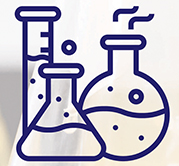The rapidly growing construction sector in India is causing a massive surge in the sales of mold release agents, mainly because of their extensive usage in various concrete brick formations. Due to the rising government initiatives and the soaring investments being made in this sector, the requirement for concrete bricks is rising rapidly across the country. For example, government programs such as the Smart City Mission and Housing for All are predicted to propel the advancement of this sector.
Due to the aforementioned factors, the Indian mold release agents market is predicted to grow substantially in the coming years. The market value is predicted to increase from $114.6 million in 2018 to more than $153.9 million by 2024. Furthermore, the market is predicted to demonstrate a CAGR of 5.2% from 2019 to 2024. Depending on type, the market is divided into water-based and solvent-based categories. Between these, the water-based category is currently recording faster growth in the market.
 |
| To learn more about this report: https://bit.ly/2SgDyaP |
On the basis of type segment, the Indian mold release agents market is categorized into water-based, solvent-based, and others. Of these, the water-based category is demonstrating the highest growth in the market. This is attributed to the presence of minimal volume of carcinogens and mutagens, including volatile organic compounds (VOCs), in the water-based mold release agents, in comparison to solvent-based agents. Also, concern about environment stringent norms for VOC emissions is increasing. These factors will eventually increase the demand for water-based mold release agents in coming years.
One of the biggest trends currently being witnessed in the Indian mold release agents market, as per the observations of P&S Intelligence, a market research company based in India, is the increasing popularity of the water-based mold release agents over the traditionally used solvent-based mold release agents. The water-based mold release agents contain zero harmful solvents or chemicals that can negatively impact the environment or the health of humans, unlike the solvent-based ones.
Hence, it can be said with surety that the demand for mold release agents would surge in India in the forthcoming years, primarily because of their ballooning usage in the construction sector, which is itself exhibiting unprecedented growth in the country.
Read More: https://www.psmarketresearch.com/market-analysis/indian-mold-release-agents-market

































